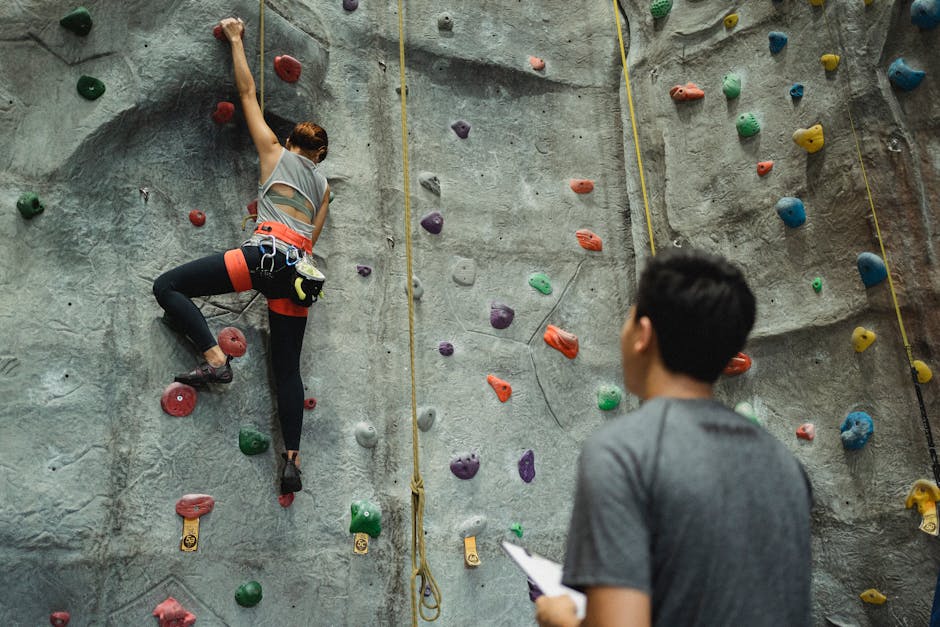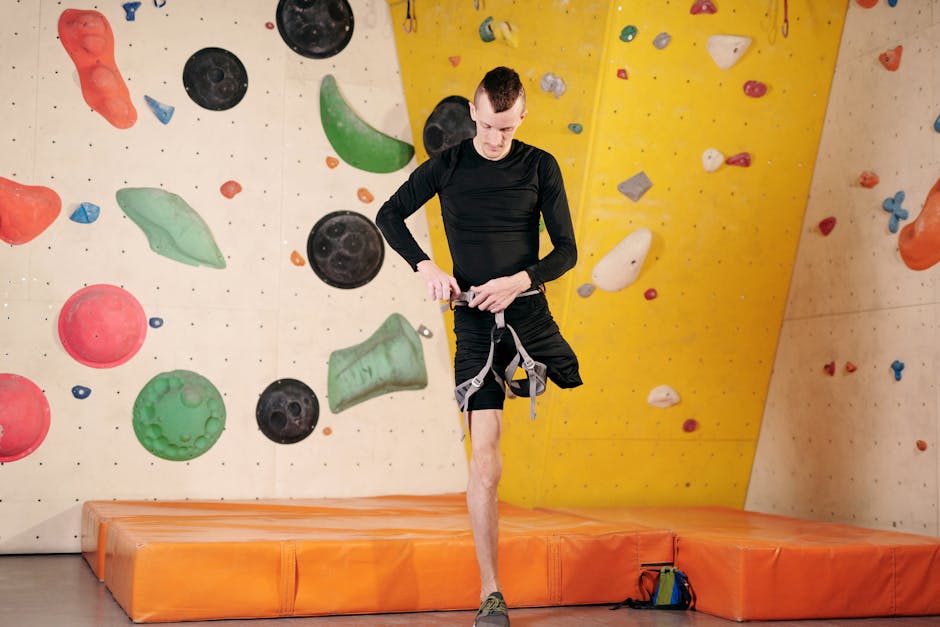Climbing Ascenders: A Comprehensive Guide to Vertical Ascension
Are you an adventurous soul seeking to conquer new heights, both physically and metaphorically? If so, the world of climbing ascenders might just be the perfect playground for you. From rock climbers scaling towering cliffs to industrial workers navigating precarious heights, the versatile tool known as the climbing ascender plays a crucial role in a myriad of vertical activities. In this in-depth exploration, we delve into the mechanics, applications, history, and future of climbing ascenders, shedding light on this fascinating tool that enables humans to defy gravity with ease.
The Evolution of Climbing Ascenders
Before we delve into the intricacies of climbing ascenders, it’s essential to understand their evolution over time. The concept of using mechanical devices to aid in vertical ascent dates back centuries, with early iterations including rudimentary pulley systems and primitive rope-climbing techniques. However, the modern climbing ascender as we know it today has its roots in the innovative designs of mountaineers and engineers in the 20th century.
One of the earliest forms of climbing ascenders can be traced back to the 1930s, when French alpinist Fernand Petzl developed a prototype device to assist in rope ascents during climbing expeditions. This early model laid the foundation for the sophisticated ascenders we see in use today, featuring advanced materials, ergonomic designs, and enhanced functionality.

Fast forward to the present day, and climbing ascenders have become indispensable tools for climbers, tree surgeons, cave explorers, and a host of other vertical professionals. With advancements in technology and materials science, modern ascenders boast lightweight construction, high strength-to-weight ratios, and precision engineering that make them reliable companions in challenging terrains.
The Mechanics of Climbing Ascenders
At the core of every climbing ascender lies a simple yet ingenious mechanism that enables users to ascend ropes with efficiency and ease. The basic principle involves gripping the rope securely during upward movement while allowing for smooth downward travel. This functionality is achieved through a combination of camming action, friction, and user input, creating a reliable system for vertical progression.
Most climbing ascenders consist of a metal frame with a camming mechanism that grips the rope when weight is applied from below. By pressing the device against the rope with their body weight, users engage the camming mechanism, allowing them to ascend the rope by stepping up or pulling themselves upward. To descend, users simply release the pressure on the device, allowing the cam to disengage and slide freely along the rope.

While the basic mechanics of climbing ascenders remain consistent across different models, variations in design, materials, and features can significantly impact performance and usability. From compact ultralight ascenders for alpine climbers to heavy-duty industrial ascenders for rigging and rescue operations, the market offers a wide range of options to suit the diverse needs of vertical enthusiasts.
Applications of Climbing Ascenders
The versatility of climbing ascenders extends far beyond traditional rock climbing, encompassing a wide range of applications in various industries and recreational pursuits. Here are some of the key areas where climbing ascenders play a vital role:
Rock Climbing and Mountaineering
Rock climbers and mountaineers rely on climbing ascenders as essential tools for ascending fixed ropes, aiding in route-finding, and providing backup security during challenging climbs. Ascenders allow climbers to ascend steep pitches with minimal effort, conserve energy, and focus on technique and strategy rather than physical exertion.

Whether tackling vertical ice walls, scaling towering cliffs, or navigating alpine environments, climbers trust their ascenders to provide reliable support and enhance their overall climbing experience. With advancements in design and technology, modern ascenders offer enhanced safety features, ergonomic designs, and compatibility with a wide range of rope diameters, making them indispensable companions for climbers of all levels.
Tree Climbing and Arboriculture
Arborists and tree climbers utilize climbing ascenders to ascend tall trees for maintenance, pruning, or tree care operations. Ascenders allow tree workers to access difficult-to-reach branches, navigate dense foliage, and move vertically in a controlled and efficient manner. With proper training and equipment, tree climbers can safely ascend trees of varying heights and diameters using ascenders and other climbing tools.

Tree climbing ascenders are specifically designed for arboriculture applications, featuring lightweight construction, ergonomic handles, and compatibility with tree-friendly ropes to minimize damage to tree bark and branches. Arborists rely on ascenders to perform aerial inspections, remove deadwood, and provide care to urban trees in populated areas.
Caving and Speleology
Cave explorers and spelunkers use climbing ascenders to navigate vertical shafts, ascend vertical ropes, and explore underground caverns with ease. Ascenders play a crucial role in caving expeditions, allowing spelunkers to access deep cave systems, traverse narrow passages, and descend safely into the depths of the earth.

With specialized ascenders designed for caving applications, spelunkers can negotiate vertical drops, climb rope ladders, and maneuver through tight squeezes in challenging cave environments. Ascenders provide essential support and security in the unpredictable world of underground exploration, enabling cavers to push the boundaries of discovery and adventure.
Expert Opinions on Climbing Ascenders
To gain further insights into the world of climbing ascenders, we reached out to renowned experts in the field for their perspectives on the tool’s significance and impact. Here’s what they had to say:
Dr. Emily Carter, Professional Climber and Trainer
“Climbing ascenders have revolutionized the way we approach vertical terrain, allowing climbers to push their limits and explore new heights with confidence. As a professional climber and trainer, I’ve seen firsthand the transformative power of ascenders in enhancing safety, efficiency, and performance in the climbing community.”
John Smith, Certified Arborist and Tree Climbing Instructor
“In the world of arboriculture, climbing ascenders are indispensable tools for tree care professionals seeking to access tall trees safely and efficiently. As a certified arborist and tree climbing instructor, I emphasize the importance of proper training, technique, and equipment when using ascenders in tree climbing operations to ensure the safety of both climbers and trees.”
Common Misconceptions About Climbing Ascenders
Despite their widespread use in various vertical activities, climbing ascenders are sometimes misunderstood or misrepresented. Let’s debunk some common misconceptions about climbing ascenders:
Misconception #1: Climbing ascenders are only for experienced climbers.
While climbing ascenders require proper training and technique to use safely, they are not exclusively reserved for experienced climbers. Beginners can learn to use ascenders under the guidance of qualified instructors and gradually build their skills and confidence in vertical ascension.
Misconception #2: Ascenders are difficult to operate and require significant strength.
Modern climbing ascenders are designed to be user-friendly and efficient, requiring minimal strength to operate effectively. With the right technique and proper understanding of the device’s mechanics, climbers of all levels can master ascender use and enjoy the benefits of vertical ascension.
Conclusion: Ascend to New Heights with Climbing Ascenders
To wrap things up, climbing ascenders represent a fascinating blend of engineering, innovation, and adventure, enabling humans to defy gravity and explore vertical terrain with confidence and skill. Whether you’re a seasoned climber seeking to conquer new peaks or an arborist navigating treetops for tree care operations, climbing ascenders offer a versatile and reliable solution for vertical ascension.
As technology continues to evolve and our understanding of vertical environments deepens, climbing ascenders will undoubtedly play a crucial role in shaping the future of vertical activities and exploration. So, next time you gaze up at a towering cliff or a majestic tree, remember that with the right tools and training, the sky’s the limit or should we say, the summit awaits!




